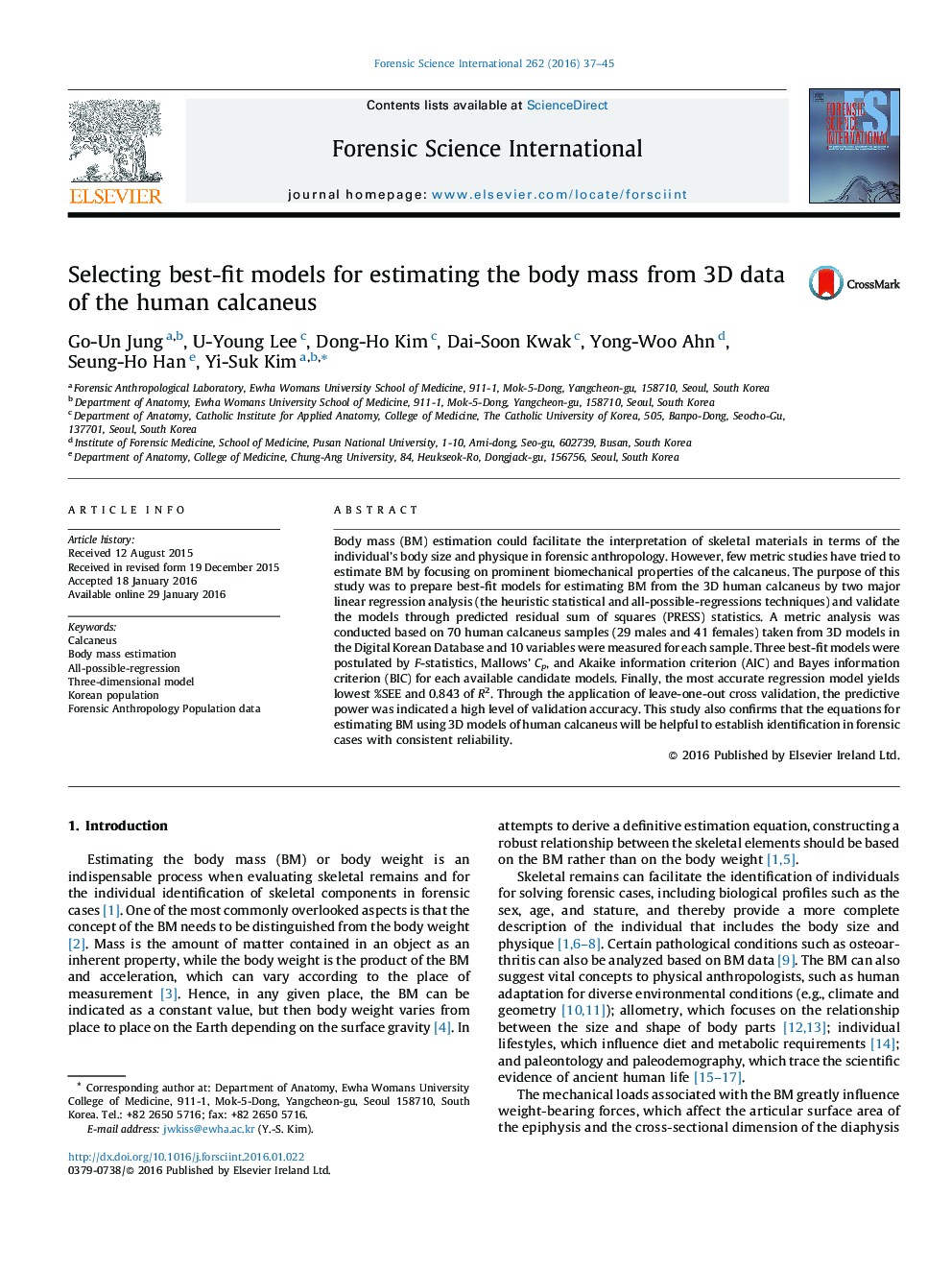| Article ID | Journal | Published Year | Pages | File Type |
|---|---|---|---|---|
| 95091 | Forensic Science International | 2016 | 9 Pages |
•Best-fit models for predicting the body mass from the human calcaneus is developed.•Load arm of the calcaneus are strongly correlated with the body mass statistically.•The all-possible-regressions offer constant predictive accuracy in forensic study.
Body mass (BM) estimation could facilitate the interpretation of skeletal materials in terms of the individual's body size and physique in forensic anthropology. However, few metric studies have tried to estimate BM by focusing on prominent biomechanical properties of the calcaneus. The purpose of this study was to prepare best-fit models for estimating BM from the 3D human calcaneus by two major linear regression analysis (the heuristic statistical and all-possible-regressions techniques) and validate the models through predicted residual sum of squares (PRESS) statistics. A metric analysis was conducted based on 70 human calcaneus samples (29 males and 41 females) taken from 3D models in the Digital Korean Database and 10 variables were measured for each sample. Three best-fit models were postulated by F-statistics, Mallows’ Cp, and Akaike information criterion (AIC) and Bayes information criterion (BIC) for each available candidate models. Finally, the most accurate regression model yields lowest %SEE and 0.843 of R2. Through the application of leave-one-out cross validation, the predictive power was indicated a high level of validation accuracy. This study also confirms that the equations for estimating BM using 3D models of human calcaneus will be helpful to establish identification in forensic cases with consistent reliability.
